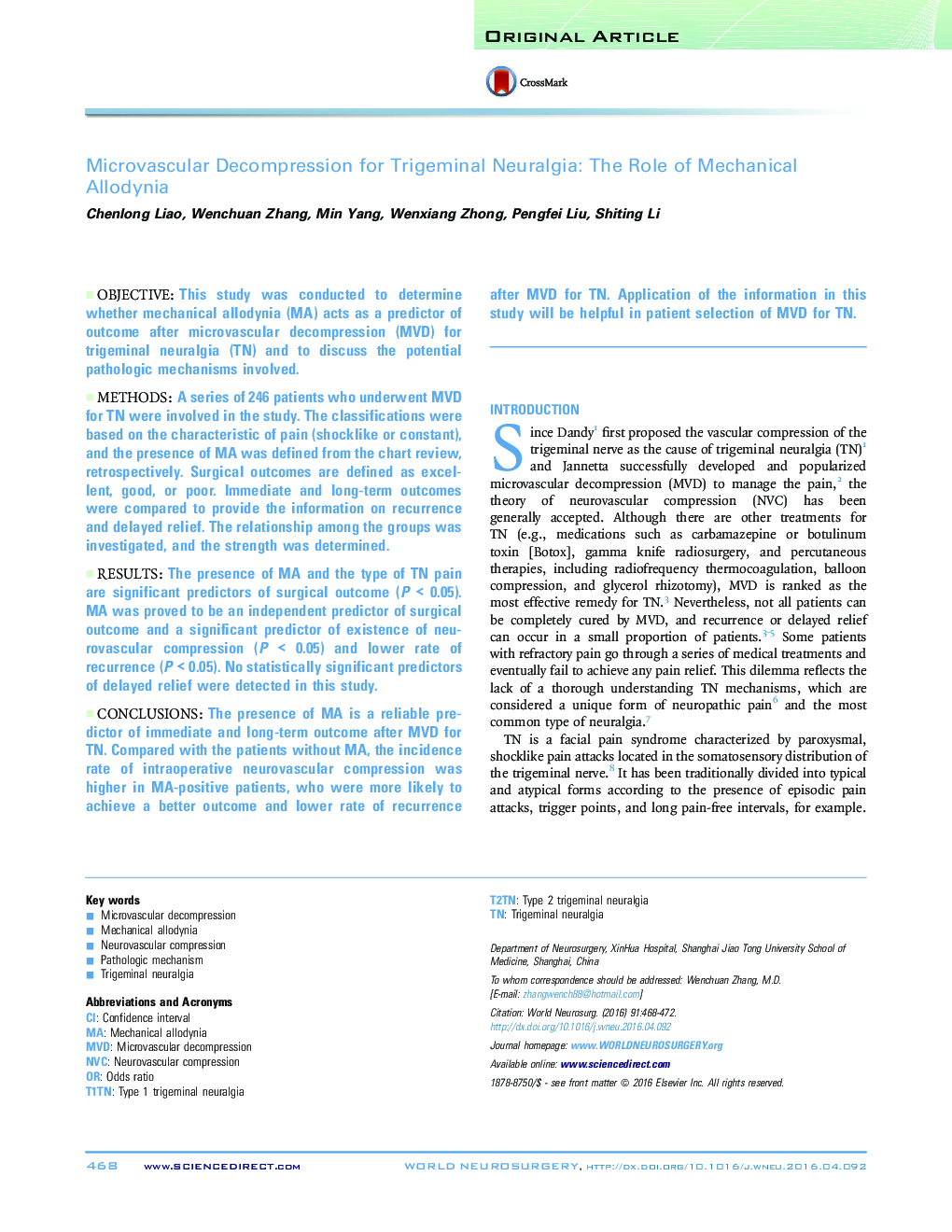| Article ID | Journal | Published Year | Pages | File Type |
|---|---|---|---|---|
| 3094567 | World Neurosurgery | 2016 | 5 Pages |
ObjectiveThis study was conducted to determine whether mechanical allodynia (MA) acts as a predictor of outcome after microvascular decompression (MVD) for trigeminal neuralgia (TN) and to discuss the potential pathologic mechanisms involved.MethodsA series of 246 patients who underwent MVD for TN were involved in the study. The classifications were based on the characteristic of pain (shocklike or constant), and the presence of MA was defined from the chart review, retrospectively. Surgical outcomes are defined as excellent, good, or poor. Immediate and long-term outcomes were compared to provide the information on recurrence and delayed relief. The relationship among the groups was investigated, and the strength was determined.ResultsThe presence of MA and the type of TN pain are significant predictors of surgical outcome (P < 0.05). MA was proved to be an independent predictor of surgical outcome and a significant predictor of existence of neurovascular compression (P < 0.05) and lower rate of recurrence (P < 0.05). No statistically significant predictors of delayed relief were detected in this study.ConclusionsThe presence of MA is a reliable predictor of immediate and long-term outcome after MVD for TN. Compared with the patients without MA, the incidence rate of intraoperative neurovascular compression was higher in MA-positive patients, who were more likely to achieve a better outcome and lower rate of recurrence after MVD for TN. Application of the information in this study will be helpful in patient selection of MVD for TN.
